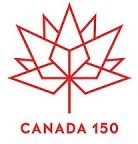138
of 150: Passing Muster
Passing Muster
By Rosemarie Hutchinson
Legion Magazine, July 1986
I lean against the hangar wall and watch the action on the
tarmac. It is crowded with air force other ranks. Soon all this blue-clad
humanity will be dragooned into orderly flights by harassed NCOs. This
is going to be the absolutely ultimate parade. The Kind is coming, the
Queen too, and as an added attraction the two princesses. It is the year
of Our War 1944. The place RCAF Topcliffe, Yorkshire, England.
Though it was six months ago, it seems only yesterday
that I said farewell to my good parents in Canada. I can still hear my
mother shouting instruction: ``When you are on the ship, Rosemary, be sure
to walk round the deck 10 times everyday. There is nothing like fresh air
to prevent sea-sickness!’’ She should know, the sight of a row-boat makes
her throw up, a rubber duck in the bath-tub brings on a convulsion.
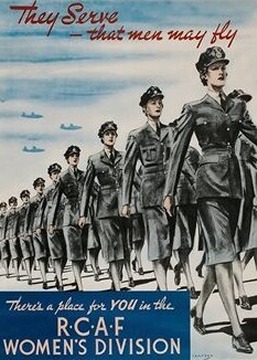 About
the first person I had seen on boarding the Queen Elizabeth was my friend
Charlie. I should have known that was inevitable. She and I seem fated
to spend our service life in harness. We have already done 18 months together
as motor-transport drivers in Newfoundland. But I was glad to see her.
Life with Charlie is never dull. She tends to involve herself in all sorts
of scrapes and unsuccessful scams, carrying me with her into endless trouble.
However, she is a cheerful girl and has a blithe spirit in adversity. So
far, I must admit, we have not run into much, but in war-torn England you
can never tell.
About
the first person I had seen on boarding the Queen Elizabeth was my friend
Charlie. I should have known that was inevitable. She and I seem fated
to spend our service life in harness. We have already done 18 months together
as motor-transport drivers in Newfoundland. But I was glad to see her.
Life with Charlie is never dull. She tends to involve herself in all sorts
of scrapes and unsuccessful scams, carrying me with her into endless trouble.
However, she is a cheerful girl and has a blithe spirit in adversity. So
far, I must admit, we have not run into much, but in war-torn England you
can never tell.
I hope she gets back in time for this parade. Having been
stricken by hunger pangs, she has sneaked away to the kitchen door of the
officers’ mess to inveigle food from some overworked cook to sustain
her during the inspection. Only Charlie would have the nerve to do this
just before the advent of royalty.
Now I can see her weaving her way through the crowd clutching
a paper bag.
"What’s in the bag?" I ask.
"Say, the King must be staying to lunch, no spam today.
I got roast beef sandwiches in here all plastered with Gentleman's Relish,
whatever that may be."
"It’s like pickle, my father uses it all the time, he
even puts in on sardines." I have a sudden nostalgic flashback to our dining
room in Montreal and see dear old Dadsy with the pickle bottle at the ready
by his elbow.
Charlie digs into the paper bag and fishes out two hunks
of bread bulging with juicy meat. I eat in such a hurry everything gets
wedged somewhere round my tonsils.
"Didn’t you bring anything to drink?" I ask.
"For crying out loud, I told you to come with me. I had
some orange squash, could have had beer instead, but I was afraid I might
breathe on the brass."
At this moment I heard the sergeant major calling out
the markers. Charlie looks around wildly for somewhere to stow her empty
paper bag and finally wedges it behind the hangar door. At the call to
fall in we shuffle on to the tarmac and I lose sight of Charlie in the
general upheaval. After the usual fuss and flap we are sized into flights
and I end up in the front rank two down from the marker. I can hear a sergeant
bawling at someone and figure it must be Charlie being dumb. That girl
does not know her left from her right.
Now, in a parade, the front rank is not a good position
if you wish to remain invisible, which has always been my aim in service
life. You are much better off in the middle or rear rank.
Important people invariably talk to front-row persons
when reviewing a parade. However, it has been my experience that these
important people also tend towards certain types. I you look all gung-ho
and hearty you are sure to be singled out for a question. On the other
hand if you droop like some tired old horse, obviously wishing you had
never heard of the air force, let alone joined it, important people home
in instinctively, as it is clear you need backing up lest you collapse
on the ground entirely.
The best way to avoid all this unwanted attention is to
stare fixedly at the horizon looking slight idiotic. Important people steer
clear of idiots, though this is sometimes difficult as there are so many
about. I have practised this policy with great success since leaving Manning
pool and have yet to be asked a question on parade.
I cannot see much of what is going on as we are at the
rear directly behind a big flight of WAAF. On either side of the tarmac
four Lancasters have been drawn up, no doubt for authentic decoration.
Their great wings cast shadows at our feet.
Although my view of the royal party is nil I can tell
at once when they arrive. There is a sort of breathless hush and the NCOs
glance down the flights to make sure we are all behaving .
Now begins the raison d’etre for the King’s visit. He
is awarding medals to aircrew. One by one as their names are called these
recipients march up to have the awards pinned on their chest. Then comes
the tragic names, the posthumous awards. These me will never wear medals
they sleep forever in England or Europe, of cradled in the depths of the
sea. I wonder what Charlie is thinking. Her brother was killed at Dieppe.
The inspection begins. I hope it will be short as my legs
are getting tired. To pass the time I stare up at the Lancasters. How big
and deadly they look as they loom over the tarmac.
Suddenly our flight is called to attention. Out of the
corner of my eye I can see a group of people approaching, their leader
awesomely recognizable. Incredibly they bypass the marker and stop in front
of me.
It is an indescribable sensation being eyeball to eyeball
with the King of England. I am quite numb. Never again in this life will
I be such a centre of attention, or feel so inadequate. Four very senior
officers, air marshals, have their eyes on me, also a WAAF senior person
with scrambled egg on her cap whom I have never seen before and our own
women’s division commander, who sill boil me in oil if I do not do her
credit.
But they all pale into insignificance as I meet a pair
of very blue eyes. The King looks magnificent in the uniform of Marshal
of the Air Force. He asks me kindly where my home is and do I like England.
I remember to says "Your Majesty" to the first question and "Sir" to the
second. He passes on down the ranks and I fervently hope I have not
looked like the tired old horse. Won’t my mother be pleased! She will tell
all her friends, making it sound as though the King had invited me to Buck
House for tea.
Later in the mess hall Charlie asks me what the King said.
When I tell her, she remarks rudely: "Wonder why he’d bother talking to
you." I tell her it is because I have such an intelligent and beautiful
face, a rare combination. She laughs so hard she chokes on a Brussels sprout.
But much much later Charlie is not laughing at all. In
the early dawn I wake in our Nissen hut to see her sitting on the cot next
to mine, smoking. The only lights comes from the evil little stove that,
belching smoke and coke fumes, keeps us all warm through the night. I go
and sit beside her on the narrow bed, asking what is wrong.
"Ah." She says sadly, "the parade today has made me think
of Dicky. He was my twin, you know." Her only bother too, this boy killed
at Dieppe.
So we sit together in the gloom ruining our lungs with
cigarette smoke, grieving silently for the dead youth of our generation.
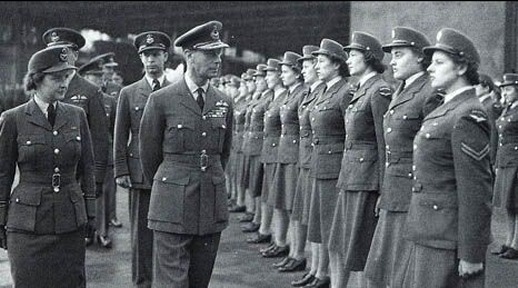
King George VI inspecting members of the Royal Canadian Air Force
Women's Division
139
of 150: No. 7 AOS and No. 14 EFTS – Portage la Prairie, Manitoba
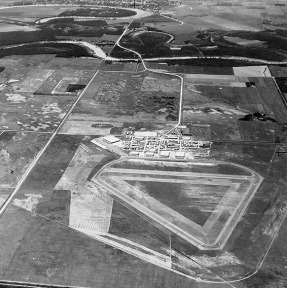 .
.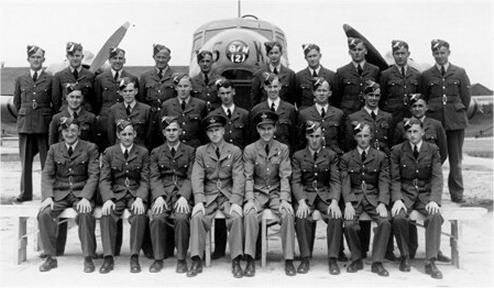
No. 7 Air Observers School - 1944 :: Class 81N (2) -
New Zealanders
No. 7 Air Observer School opened on April 28, 1941, across
a country road from No. 14 Elementary Flying Training School which opened
on October 28, 1940 in the Rural Municipality of Portage la Prairie, Manitoba.
No. 7 was open for 1,433 days while No. 14 was open at this location
for 613 days. While the two were co-located south of the City or Portage,
they shared a 15 bed hospital. The cost to build both schools was $450,000
($7,266,666 in 2017 dollars) by Claydon and Company.
The elementary school opened with eight large buildings
including an airman’s quarters, an officers’ mess and quarters, an Non-Commissioned
officers’ mess and quarters, a hangar, ground-instruction school, plus
a stores building and garage. When this school was transferred to Assiniboia,
Saskatchewan, the air navigation school took over these assets for its
own training needs.
The larger air navigation school opened with 12 large
buildings including a double-hangar, a single hangar, an individual mess
and quarters for officers and a combined mess and quarters for NCOs and
airmen, wireless building, direction finding equipment building, motor-transport
building, stores building workshop and headquarters building. No.
7 AOS was one of three Air Navigation School operated privately by Canadian
Pacific Airlines with the Royal Canadian Air Force providing the training.
Initially, Commonwealth Air Forces operated with Air Observers
trained in the British Commonwealth Air Training Plan Air Observers Schools.
Streamlining of Bomber Command crews led to the deletion of the Air Observers
positions in favour of Navigators whose job descriptions were re-written
to better meet the needs of the air crews. Thus was born the Navigator
B (Bomber) who were deployed to large bombers with large crews (e.g.
Lancasters Halifaxes) and the Navigator W (Wireless) who were assigned
to smaller combat aircraft such as the Mosquito which flew with a pilot
and navigator.
In all cases the Observers or the Navigators would first
complete training at an Initial Training School and then were transferred
to the air observer school for more advanced training. This was followed
by Bombing & Gunnery School for Observers and Navigator B air crew
, or Wireless School for Navigator W air crew. The Observers and
Navigators would complete their training at an Air Navigation School.
The curriculum at No. 7 Air Observers School included
training in air navigation, air photography, reconnaissance, observation
and mapping.
The elementary school utilized the de Havilland Tiger
Moth aircraft for training while the air observer school used the Avro
Anson.
After World War II, the aerodrome was used by a number
of RCAF units until 1949 when it was closed. It was re-opened in the 1950s
as a training school for the RCAF and NATO (North American Treaty Organization)
air forces.
Today it is the site of the privately owned Southport
Aerospace Centre catering to commercial and industrial customers. A good
portion of the World War II buildings still remain at Southport along with
a new control tower and barracks, located away from the original buildings.
Southport is home to No. 3 Canadian Forces Flying Training School, associated
with 17 Wing based in Winnipeg, Manitoba. It provides Primary Flight Training
and Helicopter Training.
Here are some interesting statistics gleaned from a book
named "The Record" which was produced as a souvenir when No. 7 Air
Observer School closed in 1945.
No. 7 AOS – The Numbers
Period of Operation – three years, 11 months
Airmen Graduated – 5,176
Hours flown (1/3 night flying) – 201,536
Miles flown – 24,184,320
Average training flight hours – 3:15
Average training flight miles – 350
Fatal Crashes – five
Maximum number of aircraft on charge – 95
Buildings maintained – 45
Gasoline, gallons, aviation – 5,494,800
Gasoline, gallons, motor transport – 105,065
Oil, gallons, aviation – 161,382
Oil, gallons, motor transport - 2410
Electricity, kilowatts – 4,380,900
Water, gallons – 73,079,150
Meals served to Air Force personnel – 2,514,186
Civilian Employees – maximum, including messing staff
– 904
Operating budget, 1944 - $2,220,000
Savings on operations, 1941-1945, returned to Dominion
treasury - $644,306.89
140
of 150: A WWII Memory - Glen and Sam Merrifield - Part 14
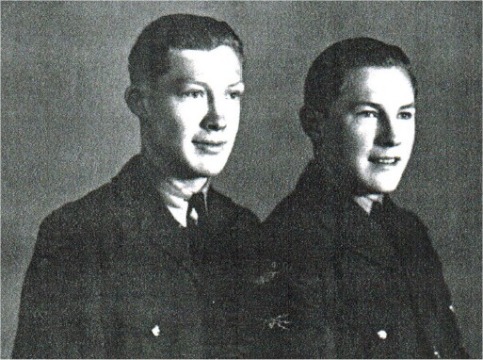 During
the fall of 1943, we who had been overseas more than three years were offered
an opportunity to return to Canada. The reports we had from those arriving
from Canada told us they were still playing "soldier" pretty hard back
there so we declined. The thoughts of marching past the flag at attention,
saluting officers, attending parades, signing in and out at guardhouses,
having passwords and polishing boots and buttons, except for going on leave,
were activities we did not wish to resume after a long freedom from them.
During
the fall of 1943, we who had been overseas more than three years were offered
an opportunity to return to Canada. The reports we had from those arriving
from Canada told us they were still playing "soldier" pretty hard back
there so we declined. The thoughts of marching past the flag at attention,
saluting officers, attending parades, signing in and out at guardhouses,
having passwords and polishing boots and buttons, except for going on leave,
were activities we did not wish to resume after a long freedom from them.
Around this time Flight Engineers became common and many
of our fitters re-mustered to aircrew. One such was a chap named Bishop.
He was a Sergeant fitter, who when he applied, was given a FE (Flying Engineer)
wing brevet, put in John Fauquier's crew and sent on ops almost immediately,
John knowing his capabilities. The Problem arose when shortly thereafter
he was given an aircrew medical which he did not pass. His one mission
was a good one as I believe John was Deputy Master Bomber that night and
Bishop spent 45 minutes over Berlin on his first operational flight. He
had a fine time for a few weeks thereafter going around telling all and
sundry to "Get One in".
The Squadron Summary of Events for January 10, 1944 shows
under VISITS AND INSPECTIONS Their Majesties, The King and Queen, accompanied
by their retinue, the Deputy AOC in - Chief RCAF O'seas, A/V/M N.R. Anderson,
the AOC Pathfinder Force (8 Group), A/V/M/ D.C.T. Bennett, C.B.E. D.S.O.
visited this station for the primary purpose of meeting aircrew of 405
(RCAF) Squadron. In spite of INCLIMATE (sic) weather, the ceremony was
carried out successfully. This was probably a very busy period in their
Majesties lives and we forgive them for not stopping by our billet and
seeing us. I shall probably skip Buckingham Palace on my next trip to London.
Rumors abounded that prior to "D" day Hitler would strike
at Bomber Command Airbases and especially Pathfinders with parachuted troops.
As a precaution all hedges and concealment was removed from around the
drome and we were issued rifles and Sten guns which we carried at all times
during this period. Thank goodness it did not
happen because a half hours practice session on a Sten
gun does not really qualify one for defence against trained troops.
At Gransden we started a section softball league which
resulted in a squadron team being chosen. I saw some service on this team
which resulted in me writing a 1980 anecdote called "Fastball, Fortresses
and Food" here it is;
Being the only Canadian Squadron in Eight Group PFF which
was located between U.S. Sth Air Corp at Bedford and the U.S. 9th Corp
at Chelmsford we never missed a chance to play a game of fastball with
the American lads and then make pigs of ourselves on their creamed canned
peas and peaches and all sorts of goodies we never saw at any RAF drome
in over four years. Their B-17 Flying Fortresses we were shown with much
pride and we spoke many fine compliments to properly set the stage. We
noted that the bomb doors could not cope with more than a 1000 lb bomb.
Now our Lancasters were off limits to other than PFF types due to H2S etc…
However we could take them out and stand them under the nose and open the
bomb doors and watch their mouths drop open. They never really believed
that an RAF twin engine Mosquito with two of a crew aboard could carry
as large a bombload as their Fortresses with 13 men aboard. Our demonstration
showed them that our "Heavies" could with ease carry 3 to 4 times as much
as theirs. Took the sting out of the beating they usually gave us on the
ball diamond.
In early June 1944 we all awaited the news that the second
front had been opened. This day I was in Cambridge on day off and overheard
a pilot from another drome telling another he was scheduled for a 4 a.m.
takeoff, a very unusual hour in Bomber Command. On returning to camp I
was informed our time was the same and so I told the assembled poker players
that tomorrow was 'D' day. I was laughed at of course and when I went up
for breakfast next morning nobody was talking about it so I assumed I had
made a bad guess. On the shortcut bikepath to the drome from the mess,
I met the overnite drome crews coming the other way and they had been listening
to the radio and announced the invasion of the continent.
During our time at Gransden, Alex Sochowski, a Wolseley
(Saskatchewan) boy, joined the squadron. Alex, a Flying Officer, flew as
Navigator on Tomzaks crew in "M" for mother. The crew was lost but Alex
survived the war as a POW.
The Fleming brothers, Ralph and Les, from Summerberry,
a town eight miles from our home town Wolseley, joined the squadron at
Pocklington and served through to Gransden with us. One was a fitter and
one a rigger. Another Summerberry resident Don McQuaid, known as "Tex"
around the squadron, came to us as a Squadron Leader after service as a
pilot in Coastal Command and was soon promoted to Wing Commander as a Flight
Commander. Don won the DSO & DFC and had over 30 ops to his credit
when we returned to Canada in November 1944…
Fall 1944 brought War Bond time and we sent our ball team
to local villages to play a game for the locals to spur the Bond Rally.
We had our own for the first time too as the 1980 anecdote about "War Bonds"
relates:
During '44 at Gransden Lodge when the availability of
supplies were much improved someone felt that a show was needed to induce
the patriotic spirit and get the lads to buy udar Bonds. We were much excited
as we were told our Bombers would fly around in formation, something many
of us in our fourth year in Bomber Command had never
seen. Now the supply angle in '44 allowed our drome to
have a fighter stationed there for fighter affiliation exercises. What
a far cry from the summer of 1940. Our formation flying was grand but would
the Bonds bought at our drome pay for the petrol? Silly question... press
on... very grand. Now the finale... the Lancasters all down safely, the
Spitfire starts to beat up the drome to show some Fighter Command flying.
About the middle of the runway on his second pass he got too low... chips
flew from the end of his prop... he pulled up and got in safely. One advantage
of a wooden prop that splintered.
Maybe we broke even financially... hope so.
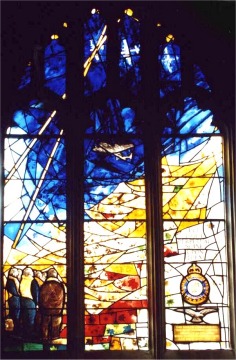
405 RCAF Squadron Memorial Window
St. Bartholomew's Church
Three light south facing window in St. Bartholomew’s in Great Gransden,
Huntingdonshire.
The 405 Royal Canadian (pathfinder) Squadron window was installed
in 1989.
‘Let light perpetual shine upon them’
This design is a memorial to the 900 men lost in bombing missions
and represented as falling maple leaves.
http://www.glenncarterglass.com/architectural/architectural_glass_barts_3.html

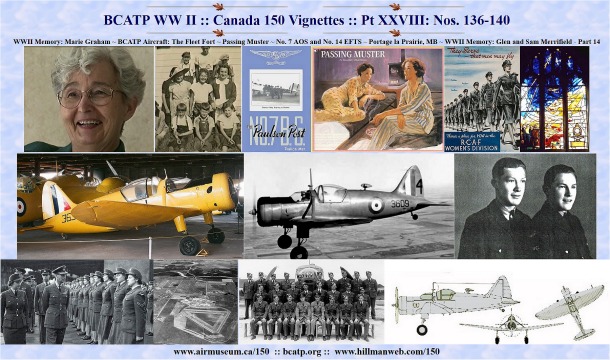
Click for full-size preview collage

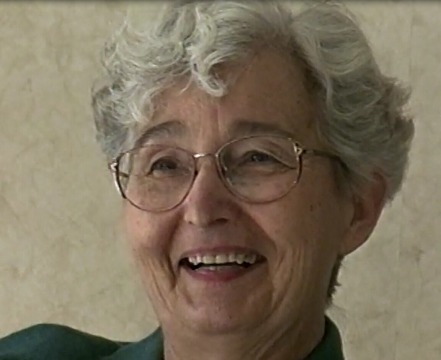 .
.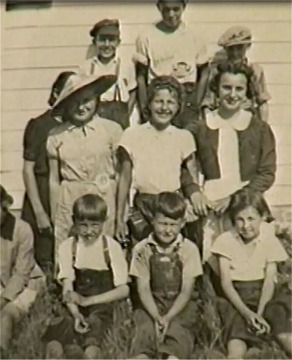 .
.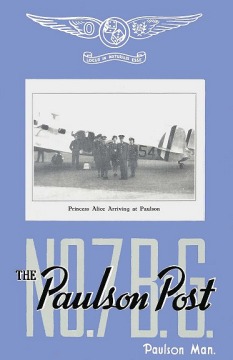
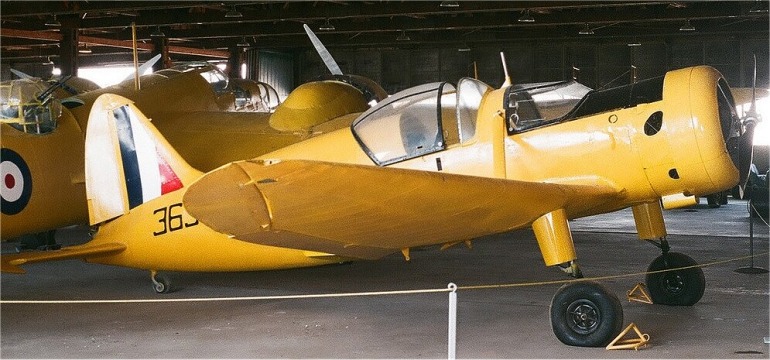
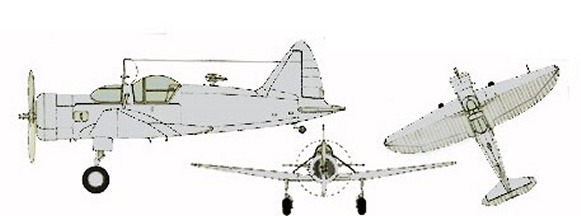
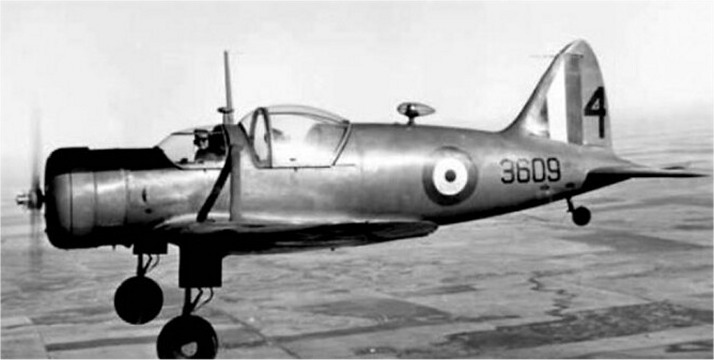

 About
the first person I had seen on boarding the Queen Elizabeth was my friend
Charlie. I should have known that was inevitable. She and I seem fated
to spend our service life in harness. We have already done 18 months together
as motor-transport drivers in Newfoundland. But I was glad to see her.
Life with Charlie is never dull. She tends to involve herself in all sorts
of scrapes and unsuccessful scams, carrying me with her into endless trouble.
However, she is a cheerful girl and has a blithe spirit in adversity. So
far, I must admit, we have not run into much, but in war-torn England you
can never tell.
About
the first person I had seen on boarding the Queen Elizabeth was my friend
Charlie. I should have known that was inevitable. She and I seem fated
to spend our service life in harness. We have already done 18 months together
as motor-transport drivers in Newfoundland. But I was glad to see her.
Life with Charlie is never dull. She tends to involve herself in all sorts
of scrapes and unsuccessful scams, carrying me with her into endless trouble.
However, she is a cheerful girl and has a blithe spirit in adversity. So
far, I must admit, we have not run into much, but in war-torn England you
can never tell.

 .
.
 During
the fall of 1943, we who had been overseas more than three years were offered
an opportunity to return to Canada. The reports we had from those arriving
from Canada told us they were still playing "soldier" pretty hard back
there so we declined. The thoughts of marching past the flag at attention,
saluting officers, attending parades, signing in and out at guardhouses,
having passwords and polishing boots and buttons, except for going on leave,
were activities we did not wish to resume after a long freedom from them.
During
the fall of 1943, we who had been overseas more than three years were offered
an opportunity to return to Canada. The reports we had from those arriving
from Canada told us they were still playing "soldier" pretty hard back
there so we declined. The thoughts of marching past the flag at attention,
saluting officers, attending parades, signing in and out at guardhouses,
having passwords and polishing boots and buttons, except for going on leave,
were activities we did not wish to resume after a long freedom from them.


